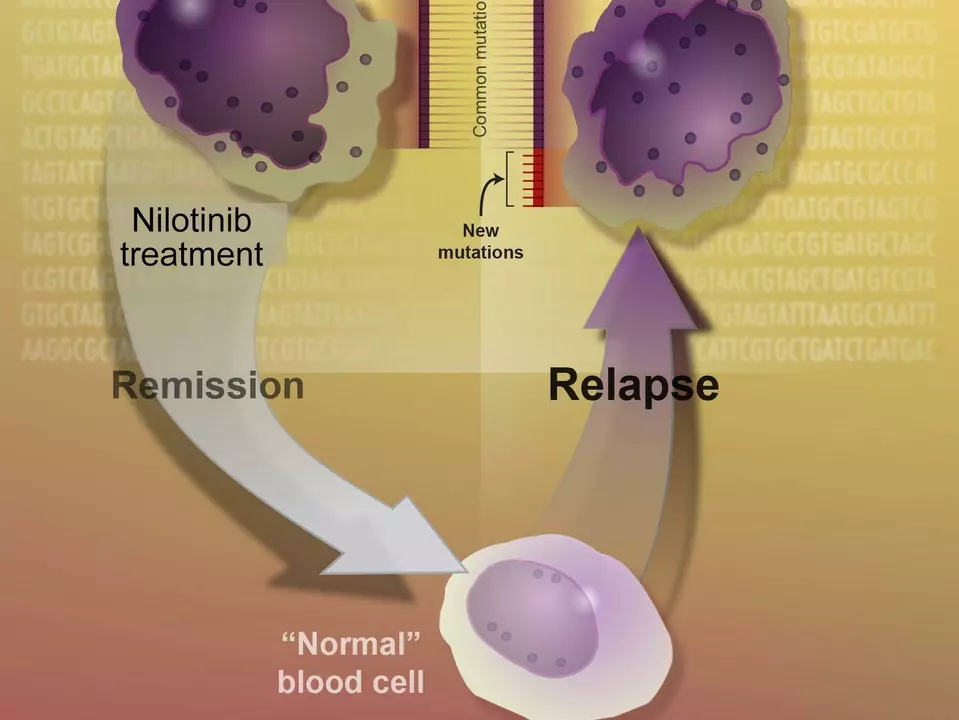Chronic Myeloid Leukemia (CML): What You Need to Know
If you’ve heard the term "chronic myeloid leukemia" and felt a bit lost, you’re not alone. CML is a blood cancer that starts in the bone marrow and produces too many white blood cells. Most people get diagnosed in middle age, but it can happen at any time.
The good news? Thanks to targeted medicines called tyrosine‑kinase inhibitors (TKIs), many patients now live normal lives for years after diagnosis. Still, understanding the basics helps you stay on top of your health and ask the right questions during doctor visits.
How CML Is Diagnosed
Doctors usually start with a routine blood test that shows an unusually high white‑cell count. If something looks off, they’ll order a complete blood count (CBC) and a bone‑marrow biopsy to look for the Philadelphia chromosome – a tiny piece of genetic material that’s the hallmark of CML.
Another quick tool is the BCR‑ABL gene test, which detects the abnormal protein driving the disease. Most labs can run this test on blood samples, so you often don’t need an invasive procedure unless the picture isn’t clear.
Once the results confirm CML, doctors will stage it as chronic, accelerated, or blast phase. The chronic phase is the easiest to treat and accounts for about 90% of new cases.
Modern Treatment Options
The game‑changer in CML therapy is the class of drugs called TKIs. Imatinib (Gleevec) was the first, followed by newer options like dasatinib, nilotinib, bosutinib and ponatinib. These medicines block the BCR‑ABL protein, slowing or stopping cancer cell growth.
Most patients take a TKI pill once daily for life. Side effects can include fatigue, nausea or mild swelling, but they’re usually manageable. If one drug causes trouble, doctors often switch to another TKI with a different side‑effect profile.
In rare cases where TKIs don’t work, stem‑cell transplantation may be considered, especially in the accelerated or blast phase. However, this procedure carries its own risks and is reserved for specific situations.
Beyond medication, regular monitoring is key. Every 3–6 months, doctors check blood counts and BCR‑ABL levels to see how well the treatment is working. If the numbers stay low, many patients can stay in the chronic phase indefinitely.
Living with CML also means looking after your overall health. Eating a balanced diet, staying active, and avoiding smoking help keep your immune system strong. Some people find support groups useful for sharing experiences and coping strategies.
Bottom line: CML is a serious diagnosis, but with modern TKIs and routine monitoring, most patients enjoy a good quality of life. Stay informed, follow up regularly, and talk openly with your healthcare team about any concerns – that’s the best recipe for managing chronic myeloid leukemia.

The Role of Nilotinib in the Treatment of Chronic Myeloid Leukemia (CML)
As a blogger, I recently came across an interesting topic - the role of Nilotinib in the treatment of Chronic Myeloid Leukemia (CML). CML is a type of blood cancer that affects the white blood cells, and Nilotinib is a targeted therapy that has shown promising results in its treatment. What makes Nilotinib stand out is its ability to block specific proteins that cause the growth of cancer cells, helping to slow down or stop the progression of the disease. Additionally, Nilotinib has been found to be more effective and tolerable than other treatments, such as imatinib, in certain cases. It's truly fascinating to see how advances in medical research continue to provide hope and improved treatment options for those battling CML.
Read More